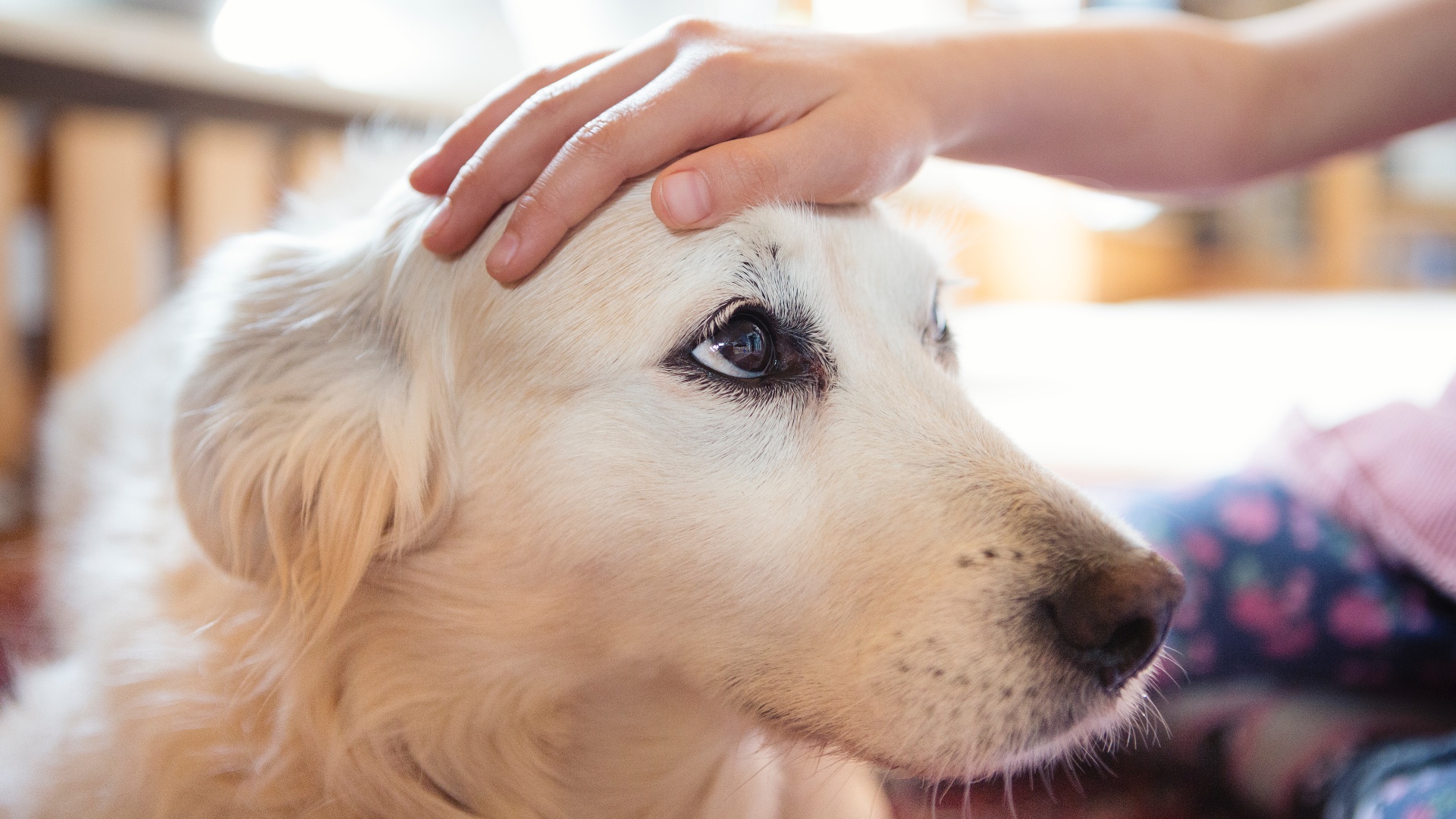Canine trainer reveals secret to keeping yourself safe when meeting a nervous dog for the first time — and it’s so simple
Use this trainer's PET-PET-PAUSE approach to ensure you and your new fur friend stay feeling relaxed and comfortable

Let's be honest — most of us find it pretty darn hard to resist reaching down to pet an adorable bundle of fluff when we come across one! Yet in our eagerness to interact with a dog, we can fail to pick up on cues they may be sending that signal they don't want to be touched.
A lot of pet parents spend a great deal of time trying to figure out how to calm a reactive dog so that their canine companion can spend time in the world without being triggered by stimuli that makes them feel nervous or anxious. If we then come along and try to engage their dog, it can put them back to square one with their training.
Thankfully, expert trainer Julianna DeWillems says there is a way that you can interact safely with a nervous pup that you're meeting for the first time — as long as their owner feels satisfied that their dog isn't so reactive that they might immediately react aggressively towards you.
A post shared by JW Dog Training & Behavior (@jwdogtraining)
A photo posted by on
In a video shared to Instagram, which you can view above, DeWillems spills the beans on her favorite training technique when it comes to introducing people to a dog they've never met before and why it's so important.
"The thing about humans is we usually blow right past a dog’s 'please don’t' signals," DeWillems says. "We can be so greedy with our desire to touch and pet dogs. Even with the best of intentions, this can be really scary and overwhelming to a lot of dogs. A simple PET-PET-PAUSE consent test can tell you a lot about if the dog is enjoying the interaction!"
DeWillems says that PET-PET-PAUSE is a really important concept if you're interacting with a dog who tends to be quite fearful.
In the video, DeWillems highlights how this technique works by getting a stranger to interact with a Chihuahua that's know to be nervous of new people. If you watch closely, you'll see the person doing what DeWillems refers to as a 'consent test' — a few strokes followed by a pause.
Get the best advice, tips and top tech for your beloved Pets
When the Chihuauhua responds favourably to the pause and nudges the person's hand, the stroking continues.
"Letting a dog opt in and out of interacting with you can go SO far when winning over their trust," DeWillems explains. "When you honor the “no,” the “yes” becomes that much more powerful. Adding in the PET-PET-PAUSE test with dogs you meet, and even your own dog, can be so valuable and important."
By petting and then pausing, you give a dog the opportunity to continue with the interaction or to walk away, ensuring you both stay safe and comfortable.
For more great canine content, check out our first person piece these are the five most useful things I’ve learned as the owner of a reactive dog for some great advice on what you can do if you have a nervous pup.

Kathryn is a freelance writer who has been a member of the PetsRadar family since it launched in 2020. Highly experienced in her field, she's driven by a desire to provide pet parents with accurate, timely, and informative content that enables them to provide their fur friends with everything they need to thrive.
Kathryn works closely with vets and trainers to ensure all articles offer the most up-to-date information across a range of pet-related fields, from insights into health and behavior issues to tips on products and training.
When she’s not busy crafting the perfect sentence for her features, buying guides and news pieces, she can be found hanging out with her family (which includes one super sassy cat and a kitten), drinking copious amounts of Jasmine tea and reading all the books.
She has written for a range of publications, including Fit&Well, Top Ten Reviews, LiveScience, Goodto, and Product Hunt.
